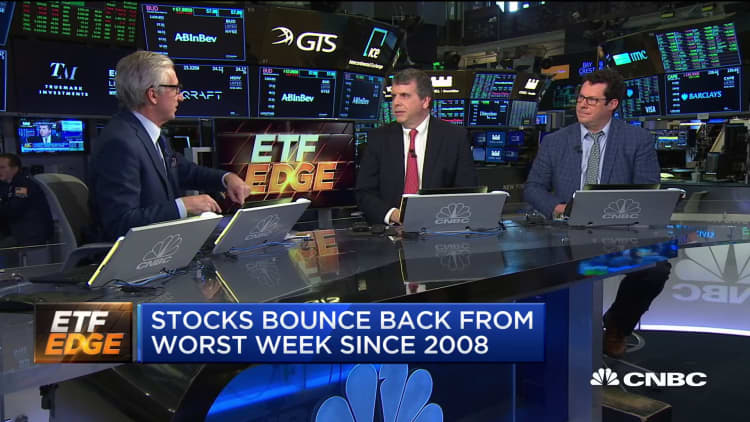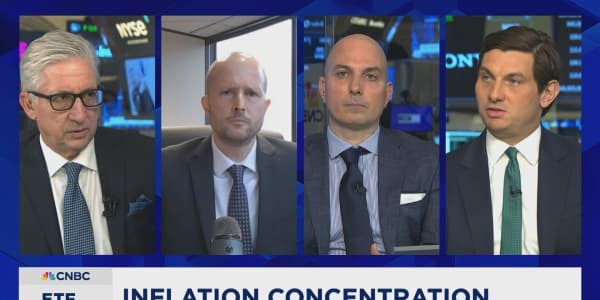
ETF efficiency.
That became a notable theme during last week's blistering sell-off, according to industry leaders. The action marked the U.S. stock market's worst week of performance since the depths of the 2008 financial crisis, fueled by fears around the global spread of the coronavirus.
"There's 2,400 ETFs," Chris Hempstead, director of institutional business development at IndexIQ, told CNBC's "ETF Edge" on Monday. "They all held up remarkably well. ... Everything really held up well in this market, and the verbiage that was being communicated to me by liquidity providers was 'orderly,' and that's important."
Orderly trading has indeed been scarce since the market tipped into correction territory last week, with the Dow Jones Industrial Average posting its biggest one-day point loss in history on Thursday, 96% of the S&P 500 entering corrections on Friday and trading platforms such as Robinhood seeing systemwide outages.
Stocks snapped back on Monday in an attempt to recover from the pain, with the Dow closing up 5.1%, or 1,293.96 points higher — its biggest one-day point gain ever — and the S&P and Nasdaq Composite climbing 4.6% and 4.5%, respectively.
Amid all the confusion and fear — with $986 billion worth of U.S. stocks changing hands on Friday, the largest dollar value ever traded, according to Goldman Sachs — ETFs have emerged as particularly efficient trading vehicles, Hempstead said.
"[On] the highest notional trading day ever, ... these products held up perfectly, exactly as they're intended to," he said, tipping his hat to volatility-trading products such as VelocityShares' Daily 2x VIX Short-Term ETN (TVIX) and Barclays' iPath Series B S&P 500 VIX Short-Term Futures (VXX) as well as his own firm's IQ Merger Arbitrage ETF (MNA).
Nick Colas, the co-founder of DataTrek Research, agreed with Hempstead, noting that even as high-yield ETFs such as the iShares iBoxx $ High Yield Corporate Bond ETF (HYG) were selling off last week, the action "didn't have a profound effect on the high-yield market" as a whole. HYG hit a new 52-week low on Monday.
"Trading held up really well," Colas said in the same "ETF Edge" interview.
Now, he's advising clients to watch two key levels on the Cboe Volatility Index, also known as the VIX or the market's fear gauge.
"We gave our clients two levels to look at on the VIX. The first is 42," Colas said. "[If] the VIX goes over 42, you buy."
The VIX hit 49.48 on Friday, the highest level for the index since 2009. On Monday, it fell to near 32 by the close.
"That's one of the reasons we're getting the bounce today," Colas said of Friday's VIX spike.
"The second level where you pile in is 55 and above. That's a real crisis, a down 5% day," he said. "It shouldn't happen, but it happened for most of Q4 '08. You buy at those levels, you wait three to six months, you have a gain. So, those are the two levels to watch for a bounce."





